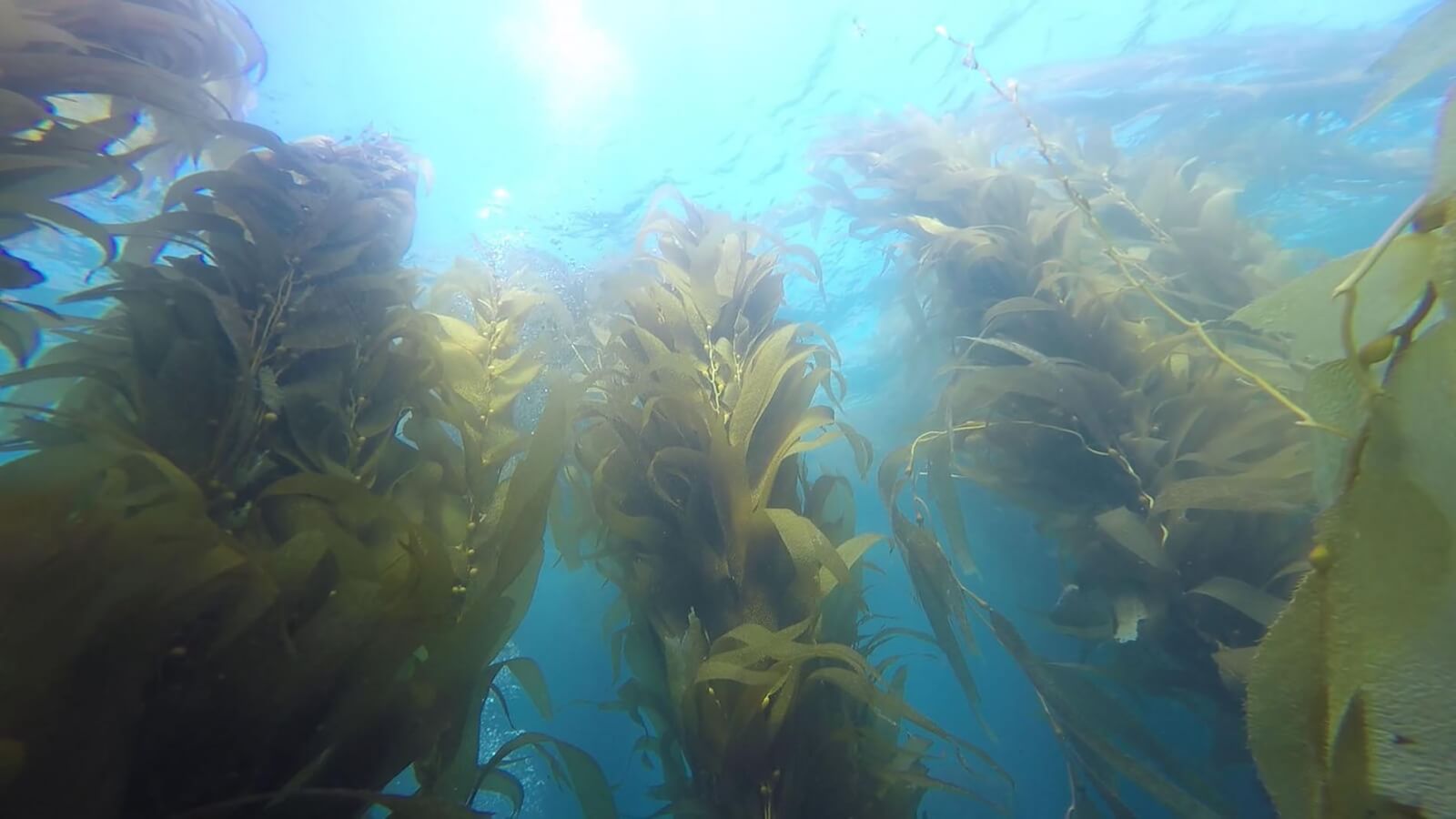
Some of the finest and most unique dive sites in the world are found beneath the waters surrounding the five islands of Channel Islands National Park. Above — and below — the water the Park more than lives up to its nickname “the Galápagos of North America.” But honestly, the nickname undersells the Channel Islands — and their diving opportunities. To fin through a swaying kelp forest, the waving strands reaching up to a sunlit surface and blue skies, is to know a peace — and thrill – like no other.
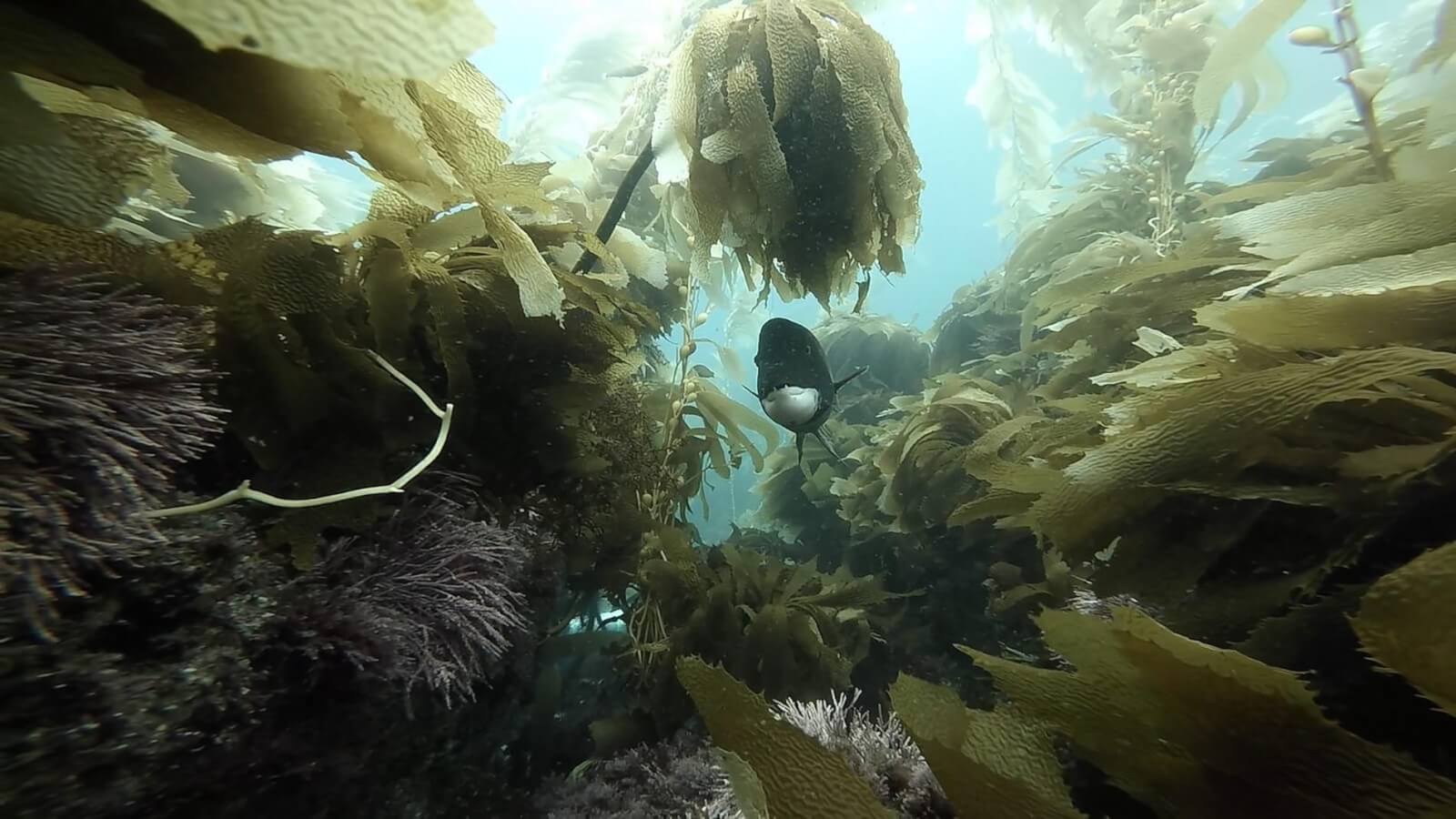
Giant kelp forests support the islands’ marine ecosystems and are home to over 800 species of marine life. The colder and nutrient-rich California Current flowing from the north surrounds the outer islands of San Miguel and Santa Rosa, while the Davidson Countercurrent flowing from the south runs along Santa Cruz and Anacapa Islands. It’s the confluence of these two currents that allow for such a stunning diversity of marine life. Everything from sea anemones to Blue Whales, the largest animal on Earth, can be found here. Fun cocktail conversation. A Blue Whale’s tongue is the size of an African elephant.
Divers can expect to find rocks covered in colorful bouquets of sea anemones, starfish, and garlands of hydrocoral, sponges, and sea fans. Tucked away in rock fissures and crevices, are moray eels, octopus, abalone, rock scallops, California spiny lobsters, and a host of other sea creatures. Giant black sea bass (some weighing in at 500 pounds), halibut, lingcod, vermilion rockfish, calico bass, and bat rays are other familiar sights, not to mention California’s very own state fish, the sometimes pugnacious (I’m protected!) Garibaldi. Seals and sea lions perform graceful pirouettes in the water column and pods of dolphins slice through the open ocean waters.
Though it has suffered impacts at man’s hand, it is still largely a marine Eden, each island offering its own unique show.
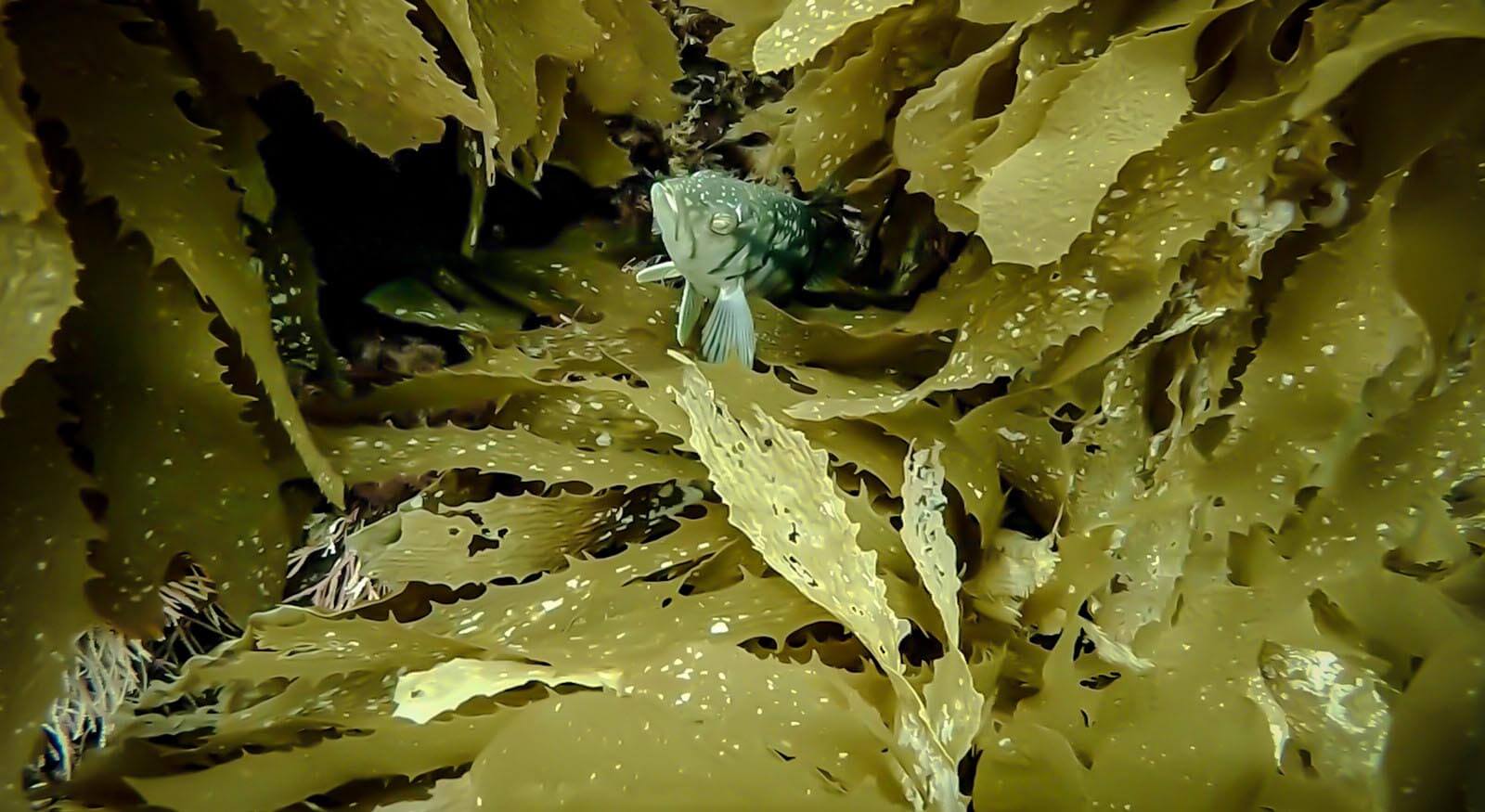
Diving at Anacapa Island
Anacapa Island has excellent dive sites with, given the right conditions, great visibility that provides a fun experience for divers. Dives vary in depths from a few feet up to 60 feet and are generally close to the island. Spots feature kelp forests, walls, and pinnacles, and the bottom is mostly sand and rocky reef. Kelp bass, sheepshead, and, yes nervy garibaldi (sometimes they’ll swim right up to your facemask), share the reefs with hundreds of plants and small creatures.
Diving in the kelp forest is a wholly different feel from tropical dives. For one thing, the water runs from cool to cold. Though it’s true that water temperatures can vary wildly (and the waters of the northern islands of San Miguel and Santa Rosa can be up to 15 degrees Fahrenheit colder), as a (very) general rule the waters off the Park islands average 50-60°F in winter and 60-70°F in summer. Making a dry suit or 7mm wetsuit with hood and gloves a must for a comfortable experience. Off Anacapa, divers might spot seals, lobster, bat rays, horn sharks, moray eels, and occasionally giant black sea bass, as well as blacksmith perch, sardines, mackerel, anchovies, and other small schooling fish. The more you look, the more you see.
The warmest water temperatures are usually recorded at the end of summer, which happily is also a time known for amazing visibility. Year-round, visibility averages 40 feet, but, when conditions are right, visibility can stretch to 100 feet and beyond; the kind of days divers talk about for the rest of their life. Anacapa Island’s popular dive sites include Coral Reef, Landing Cove, Cathedral Cove, Underwater Arch, Aquarium, Guana Banks, Rat Rock and the West End.
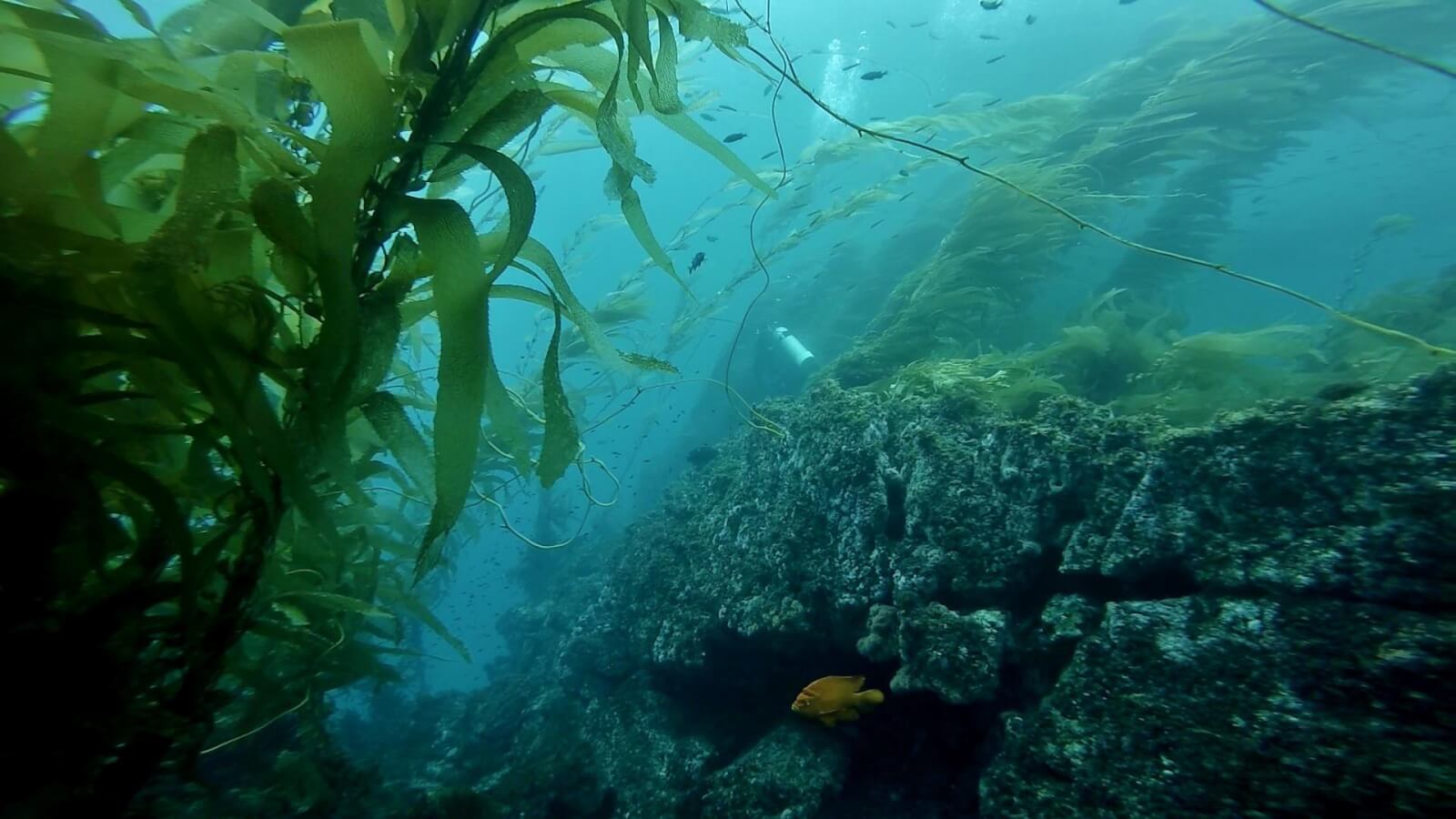
Diving at Santa Cruz Island
Santa Cruz Island sits on a transition zone between warm south currents and cooler north currents, allowing for dive sites rich with diverse marine life. Gull Island is a popular dive near Santa Cruz Island filled with large California sheephead, lobsters and purple urchin tucked into crevices on the reefs, and various colorful sea stars including bat stars, giant spined stars, and bright blood stars. Yellow Banks offers large kelp beds that stretch along the side of the island. Close to shore, the kelp beds are filled with giant brown kelp, but as divers reach depths of 80-90 feet, kelp beds are mainly made up of bullwhip kelp meaning water temperatures are much cooler. This current transition zone makes for great drift diving.
The island is also home to a very extensive system of underwater caves and caverns some of which, like Diablo Anchorage at Diablo Point Cave, make for popular dives. The island offers lots of anchorages and coves protected from the wind and weather. Dive sites around Santa Cruz Island vary from sandy bays to rocky reefs, and are excellent opportunities for beginner to moderate skilled divers.
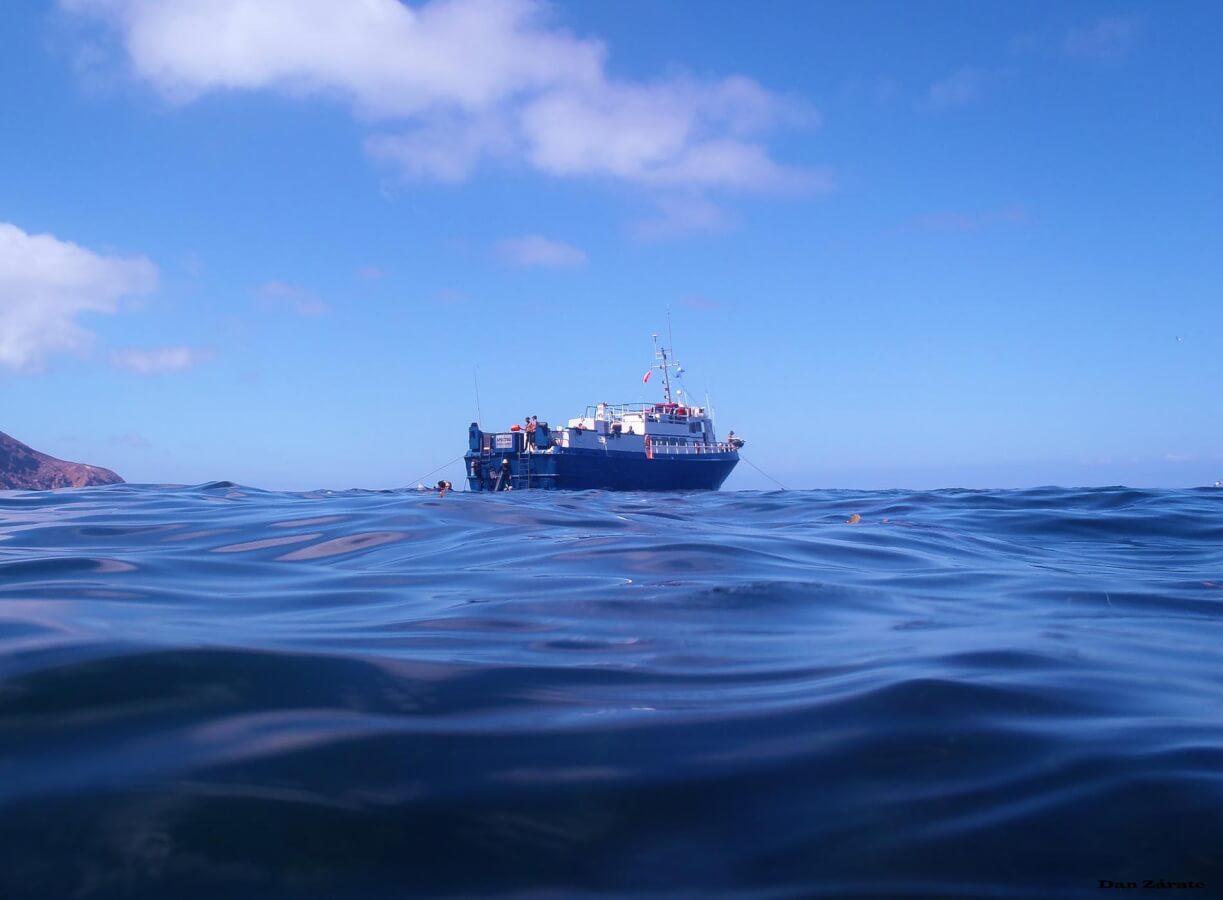
Diving at Santa Rosa Island
Santa Rosa Island is further from the mainland than Anacapa and Santa Cruz Islands, and is often battered by strong winds, but when weather and sea conditions are right, its underwater environment can make for a magical dive for advanced divers.
The Pinnacles at Santa Rosa Island offer thick kelp beds growing atop steep escarpments carpeted in colorful sea anemones. It’s no wonder fish choose to congregate around these amazing views. Depths here can reach 100 feet and the area is often bathed in currents. Nearby, Johnson’s Lee is used as an overnight anchorage by charter dive boats where night diving takes place along shallower reefs.
Diving at San Miguel Island
This northernmost Channel Island has cool nutrient-rich waters fed by the Humboldt and Davidson currents from the north that fuel kelp growth of up to two feet per day! San Miguel Island is home to a great abundance of marine life with thick giant kelp beds and easily spotted California sheephead, black sea bass, bat rays, moray eels, and colorful sea anemones.
Point Bennett on the western tip of San Miguel Island is a popular dive site often visited by California and Steller sea lions, northern and Guadalupe fur seals, and harbor and northern elephant seals, from their nearby breeding grounds. This spot offers great visibility year-round even for 30 to 50 foot dives. Wyckoff Ledge is another popular site protected from currents and home to wolf eels, mosshead warbonnets, and lots of nudibranchs. Judith Rock and Richardson Rock are also beautiful pinnacles and great dive sites for advanced divers who can handle stronger currents and deep dives.
The best spot to view California hydrocoral, a true coral endemic to California, is Wilson’s Rock two miles to the northwest of San Miguel Island, where colorful sea anemones, nudibranchs, and sea stars decorate reefs in vibrant colors and diversity. Advanced divers can enjoy deep dives and visibility exceeding 100 feet on good days.
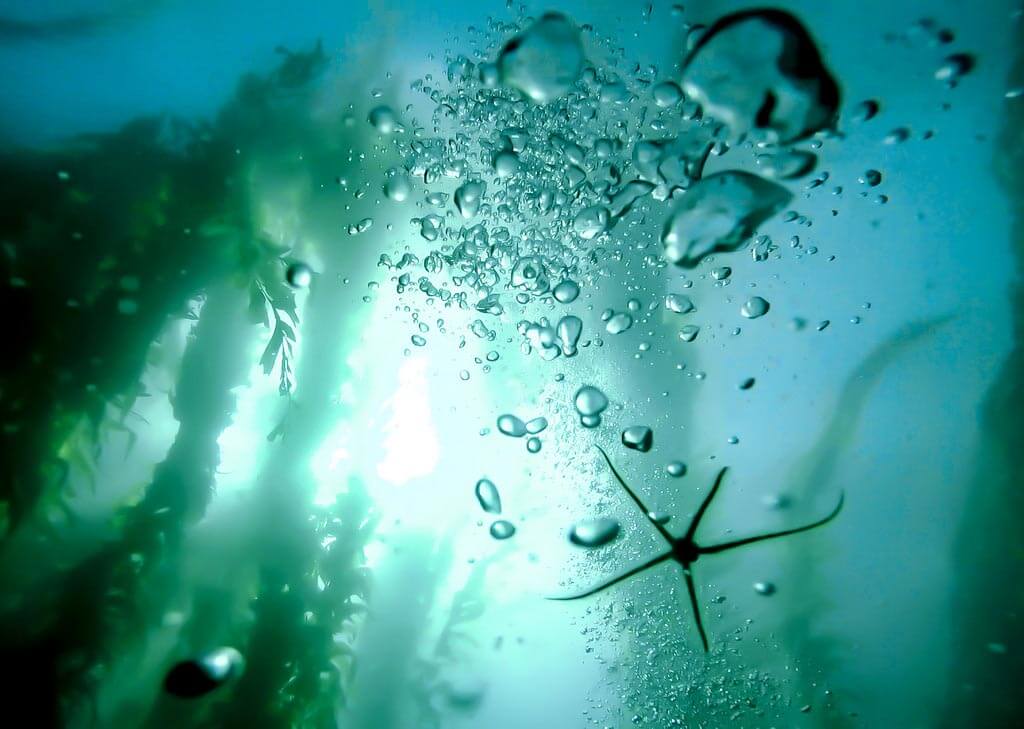
Diving at Santa Barbara Island
Santa Barbara Island is the smallest of the Channel Islands but still boasts huge variety in underwater terrain. Dive sites vary from kelp forests to arches, pinnacles and caves, to sandy bottoms filled with bat rays.
Kelp and congregations of California sheephead and Garibaldi surround The Archway which sits in about 80 feet of water covered by red gorgonians, sea anemones, sunflower stars, and California hydrocorals. Schools of mackerel and other baitfish often swirl above the reef, making for mesmerizing photo opportunities. Off the northern coast of the island, Shag Rock features steep rocks away from shore filled with kelp forests that are home to lingcod, rockfish, and lobsters. Divers also commonly see torpedo rays and leopard sharks swimming through the kelp. On the opposite side of the island, Southeast Reef features moray eels and sea lions threading through small drop-offs and ledges, while bat rays and electric rays cruise the sand corridors.
Check out Sunset Magazine’s 37 Amazing National Park Underwater Sights. The first 10 are all at Channel Islands National Park!
Photos :Top image by Brent Durand and all following Dan Zarate
Discover More
Get to know Ventura, and discover the best things to do around the city.
Diving through shipwrecks at Channel Islands National Marine Sanctuary
A Beginner’s Guide to a Day Trip at the Channel Islands
Channel Islands Kayaking Near Ventura, California
Channel Islands
How Do I Get to the Channel Islands? And Why Will it be SO WORTH IT?
Ventura Partners With







